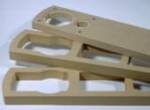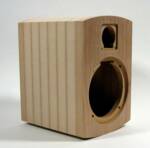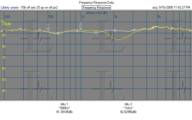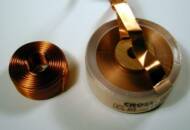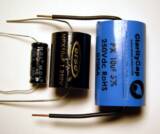

Installation Guides
Service / FAQ
Proto 5c in white
Graph of speaker on axis and off axis (red)
Frequently Asked Questions
Product Registration
Name
Email
Address
Product Model
Serial Number
Date of Purchase
must match receipt
Authorized Dealer Name
Were you satisfied with the service you received from your dealer?
Please let us know what you think of our product in the box below
What exactly is a BATT crossover?
BATT stands for "Baffle And Time Tuned". It means every crossover we make is tuned to the actual enclosure the speaker is enclosed in. We take into consideration the exact distance the drivers are spaced, the difference in phase (timing) between the drivers, and hand tune it so the speakers sound extremely accurate. This dedication to precision is what makes us different. It is far more than just mounting a couple drivers in a box. The heart and soul of every speaker is its crossover circuit. We put more time and effort into it's perfection than any other aspect of the speaker.
Why do you use such steep sloped crossovers in your speakers?
It is to create the best possible sound both on and off axis with the speaker. Most manufacturers use a 12db/octave or 2nd order crossover in their speakers. This is a simple inexpensive design that provides good sound quality on axis. The problem is, all (unless they consist of 1 driver or their voice coils are coincidental) speakers have problems as you listen to them off axis in the same direction the drivers are lined up in, for example if you have a speaker where the tweeter is above the midrange, by moving the speaker vertically up and down you end up causing aberrations between the drivers because you are closer to one of them than the other. The drivers (tweeter and woofer) end up canceling each other out at the point where their frequencies overlap. The graph above demonstrates this, on the red trace the left side of the screen represents the midrange driver and the right side of the screen is the tweeter. the dip is located between them and is centered at the frequency the crossover is designed around. The advantage to steep crossover slopes is the drivers overlap over a smaller frequency range and therefore the dip is less audible. This allows the user to listen to great sound anywhere in the room and not have to always sit in a "sweet spot".
What is meant by Point to Point crossover?
Common crossovers have an etched circuit board that each component is individually soldered to. Because the components are soldered to the board there is no mechanical connection between components. The signal is forced to travel through solder (a combination of lead and tin, which is not an ideal conductor), this in conjunction with the traces on the board create extra resistance and impede the flow of electrons. In our point to point crossovers we physically attach each component’s wires to the next component so there is no "board" for it to pass through. Our mechanical connection is glued together with solder. In Point to Point crossovers there is a clean line from source to speaker using solder as glue not a conductor.
Why do you use similar speakers for front, center and surround speakers?
Our speakers are all voiced the same so any of our them can be mixed or matched to create surround systems. With both home theater and multi channel audio, each speaker is given the same power, the same frequency range, and should be identical in the way they sound. We have created speakers with exceptional on and off axis response for the sole purpose of multi channel use. By using the similar speakers for each channel in your system you will get the best sound quality possible.
Our steep sloped crossover design with our excellent off axis response will give you better multi channel audio performance than most speakers on the market. Lots of speakers and systems use modest crossover slopes this makes for very poor off axis response due to phase cancellation. Usually with these systems the only good seat in the theater is directly in front of the center channel speaker. Not with our designs, we excel off axis, you can enjoy great sound from every seat in your theater.
What is C.O.R.E construction?
C.O.R.E. stands for cabinet optimized resonance elimination. It means the cabinet is created from multiple layers of 1" MDF that are stacked and laminated together (see pictures at left). This creates an incredibly dense and solid enclosure that has greatly reduced resonance. During construction we round the inside walls to cut down on square angles and dramatically decrease standing waves. This process uses more material and is more time consuming to manufacture. We are sure you will agree it is well worth it when you listen to our speakers.
What is an air core inductor and why is it better?
Air core inductors (shown above) are used to filter frequencies in the crossover network and control the way the speaker sounds. The Air-Core style inductor is superior to lesser iron core inductors because they do not saturate at high power and change value. In order to get the same value, an air core inductor requires a lot more copper because it does not receive help from an iron core. this makes them much more expensive. We use excellent Air-Core inductors manufactured in Denmark.
What is a polypropylene capacitor and why are they better?
A polypropylene capacitor is used to filter frequencies in the crossover network and control the way the speaker sounds. Polypropylene capacitors offer a much cleaner and sweeter sound than an electrolytic capacitor but cost considerably more money. The picture above shows an electrolytic capacitor on the left and two different grades of polypropylene on the right. These capacitors are all the same value in micro farads and show the difference in size. This is an example where size does make a difference.
What is the logic behind your model names?
i = In-Wall.
ic= In-Ceiling.
w = Wall, this model is often used for more than just wall mounting.
b = Book shelf.
f = floor standing.
c= center channel
Universal = a model that can be used for many different applications.
Classic = a more traditional speaker design.
